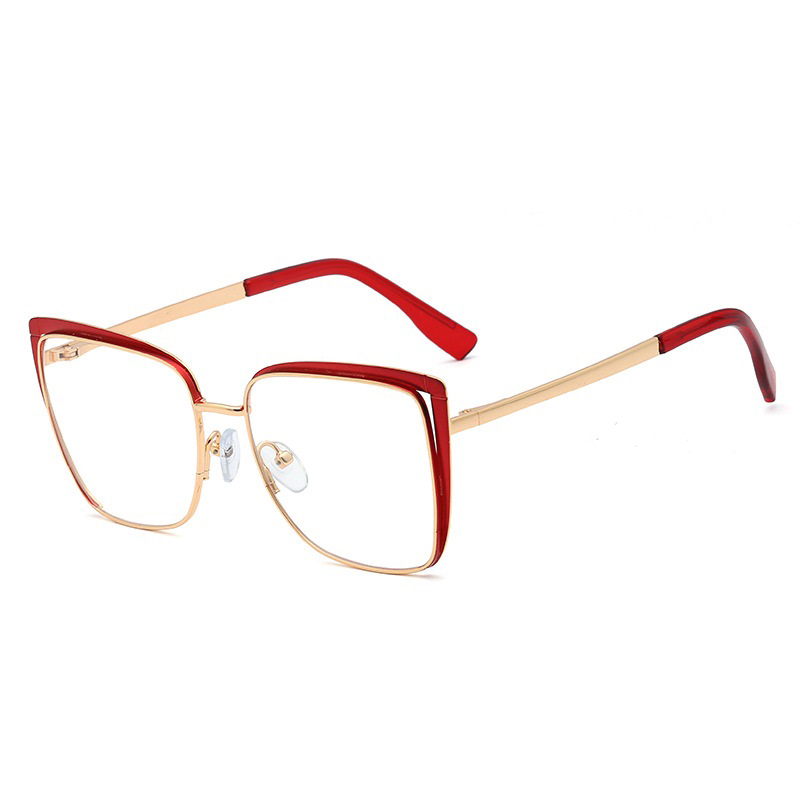



Frameless metal glasses are a popular eyewear choice for individuals seeking a minimalist, lightweight, and elegant design. Unlike traditional framed glasses, frameless models lack a full frame around the lenses, offering a sleek and less obtrusive appearance. While they provide aesthetic appeal, their performance and durability depend on material quality, design, and proper handling. Understanding their performance characteristics and precautions for use is essential to ensure comfort, longevity, and functionality.

Key Performance Features of Frameless Metal Glasses
Frameless metal glasses have several defining features that influence comfort, durability, and visual performance.
Lightweight construction: One of the main advantages of frameless glasses is their reduced weight. Without a full frame, these glasses place less pressure on the nose and ears, enhancing comfort for long-term wear. Materials such as titanium or stainless steel are commonly used, offering strength while remaining lightweight.
Minimalist design: Frameless glasses are characterized by a subtle, elegant appearance. The absence of a full frame highlights the lenses and the wearer’s facial features, making them suitable for professional or casual settings.
Durable metal components: The bridge, temples, and screws are typically made from corrosion-resistant metals such as titanium, stainless steel, or aluminum alloys. These metals provide structural integrity while resisting bending, rust, and wear over time.
Flexible temples: Many frameless glasses feature spring hinges or flexible temples. This allows the glasses to adapt to different head sizes and reduces the risk of breakage when handled or stored improperly.
Lens quality and attachment: Lenses are attached using screws, nylon wires, or other secure fasteners. High-quality lenses are usually made from polycarbonate, high-index plastic, or glass, providing clear vision, impact resistance, and scratch protection.
Customizable fit: Adjustable nose pads and temple tips enhance fit and comfort. These adjustments allow the glasses to sit securely without slipping, improving both comfort and visual stability.
These performance features make frameless metal glasses an attractive option for wearers who prioritize both style and functionality.
Functional Advantages
Beyond aesthetic appeal, frameless metal glasses offer several practical benefits for everyday use.
Comfortable wear: The lightweight and balanced design reduces pressure on the nose and ears, preventing discomfort during extended wear. This makes them ideal for office use, reading, or casual activities.
Wide field of vision: Without a frame surrounding the lenses, wearers enjoy an unobstructed field of vision. This is especially beneficial for activities that require peripheral awareness, such as driving or computer work.
Durability with proper handling: While frameless glasses may appear delicate, high-quality metal components and reinforced lens attachment points make them durable for regular use.
Stylish and versatile: Their minimalist design complements various fashion styles and face shapes, making them suitable for professional, casual, or formal occasions.
Lightweight portability: Frameless glasses are easy to carry and store, particularly when paired with a protective case, reducing the risk of scratches or deformation.
These advantages highlight the balance between aesthetics, comfort, and functional utility in frameless metal glasses.
Precautions for Use
Proper care is essential to maintain the performance and longevity of frameless metal glasses.
Handle with care: Avoid applying excessive force when putting on, removing, or adjusting the glasses. The lack of a full frame can make the lenses more vulnerable to stress and bending.
Use protective cases: Store glasses in a hard protective case when not in use to prevent scratches, accidental bending, or breakage.
Avoid high temperatures: Exposure to heat, such as leaving glasses in a car or near heating appliances, may affect lens coatings, metal components, and screws.
Regular maintenance: Periodically check screws, nose pads, and temple connections. Tighten loose screws to prevent lens detachment and maintain proper alignment.
Gentle cleaning: Clean lenses using a microfiber cloth and mild cleaning solution. Avoid abrasive materials or excessive pressure, which could scratch the lenses or damage attachments.
Adjustments by professionals: For significant adjustments or repairs, seek professional optical services rather than forcing bends or changes yourself, to prevent damage to lenses or metal components.
By following these precautions, frameless metal glasses can maintain their performance, aesthetic appeal, and durability over time.